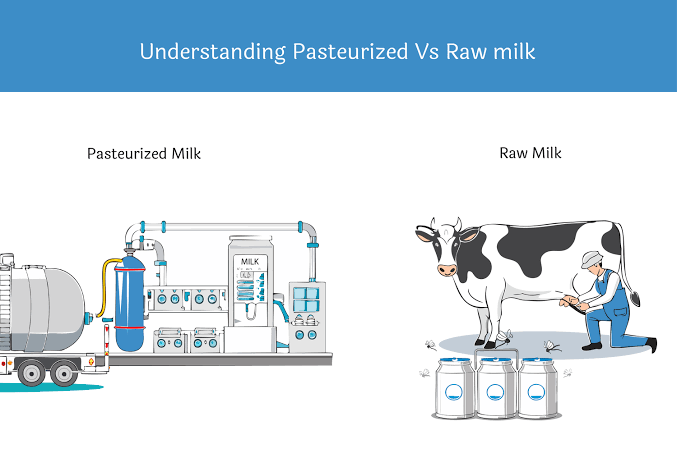Introduction
Milk is one of the most nutritious foods available, but it is also highly perishable. Without proper handling, raw milk can spoil quickly and may harbor harmful microorganisms such as E. coli, Salmonella, and Listeria. This makes pasteurization—heating milk to kill pathogens while retaining its nutritional quality—an essential step in safe dairy processing.
For rural dairy cooperatives in Nigeria and across Africa, pasteurization is especially important. It not only ensures consumer safety, but also extends milk’s shelf life, enabling cooperatives to reduce losses, improve income, and supply larger markets such as schools, restaurants, and urban supermarkets.
This article explores practical pasteurization techniques suitable for rural dairy cooperatives, balancing food safety, cost-effectiveness, and scalability.
- Why Pasteurization is Crucial for Rural Dairy Cooperatives
Food Safety: Prevents milk-borne diseases.
Shelf-Life Extension: Pasteurized milk lasts 3–7 days under refrigeration, compared to 6–12 hours for raw milk.
Market Access: Many regulatory bodies require pasteurization before milk can be sold commercially.
Consumer Trust: Safe milk builds loyalty and expands cooperative customer bases.
Value Addition: Pasteurized milk becomes the base for yogurt, cheese, butter, and other dairy products.
- Common Pasteurization Methods
There are several methods of pasteurization, each with advantages and limitations. Rural cooperatives can adopt the most practical option depending on their scale, equipment, and energy sources.
a. Low-Temperature Long-Time (LTLT)
Process: Heat milk to 63°C (145°F) for 30 minutes.
Advantages:
Simple to implement with basic equipment.
Suitable for small-scale cooperatives.
Retains good flavor and nutrition.
Limitations:
Time-consuming.
Requires close temperature monitoring.
b. High-Temperature Short-Time (HTST)
Process: Heat milk to 72°C (161°F) for 15 seconds, then cool rapidly.
Advantages:
Faster and more efficient.
Widely used in medium-to-large dairy plants.
Limitations:
Requires more sophisticated equipment and reliable electricity.
Higher initial cost than LTLT.
c. Ultra-High Temperature (UHT)
Process: Heat milk to 135–150°C (275–302°F) for 2–5 seconds, then package in sterile, airtight containers.
Advantages:
Extends shelf life to 3–6 months without refrigeration.
Ideal for areas with poor cold-chain infrastructure.
Limitations:
High equipment cost.
Requires strict aseptic packaging, making it less feasible for rural cooperatives.
d. Traditional/Improvised Methods
Boiling: Heating milk to ~100°C for several minutes, commonly practiced in rural households.
Kills pathogens but may alter taste and destroy heat-sensitive nutrients.
Batch Pasteurizers (Improvised with Steel Pots and Thermometers):
Affordable option for cooperatives.
Requires training in monitoring time and temperature.
- Affordable Pasteurization Solutions for Rural Cooperatives
Given limited resources, rural dairy cooperatives can adapt pasteurization techniques using:
Solar-Powered Pasteurizers: Leverage abundant sunlight in rural areas, reducing dependence on electricity or fuel.
Firewood or Biomass-Heated Batch Pasteurizers: Use locally available energy sources, though efficiency and sustainability must be considered.
Small-Scale Electric Pasteurizers: Compact units (10–50 liters) for cooperatives with access to power or generators.
Community-Level Pasteurization Units: Shared equipment purchased collectively by cooperatives to reduce costs.
- Key Steps in the Pasteurization Process
- Milk Collection and Filtration
Ensure milk is fresh and free from dirt or debris.
Filter through clean muslin cloth before heating.
- Heating
Apply chosen pasteurization method (LTLT, HTST, or improvised boiling).
Monitor temperature with an accurate thermometer.
- Holding/Timing
Maintain required heat for the recommended duration.
Stir gently to prevent scorching and ensure even heating.
- Rapid Cooling
Cool immediately to below 5°C (41°F).
Use cold water baths, ice, or refrigeration.
- Packaging
Store in sterilized containers (glass bottles, food-grade plastic).
Label with production date for traceability.
- Storage and Distribution
Maintain cold chain (refrigeration or insulated coolers).
Educate consumers to keep milk chilled until use.
- Challenges and Solutions for Rural Cooperatives
Challenge: Lack of Reliable Electricity
Solution: Solar-powered or biomass-heated pasteurizers.
Challenge: High Equipment Costs
Solution: Cooperative financing, microcredit, or donor support for shared equipment.
Challenge: Limited Technical Knowledge
Solution: Training programs on pasteurization and food safety.
Challenge: Cold Chain Management
Solution: Use insulated coolers with ice packs for transport and distribution.
- Opportunities for Scaling and Impact
Value Addition: Pasteurized milk enables production of yogurt, cheese, butter, and ice cream—creating new revenue streams.
Partnerships: Collaboration with NGOs, extension services, and agribusiness programs to access funding and technology.
Market Expansion: Supplying pasteurized milk to schools, hospitals, and urban supermarkets.
Youth and Women Empowerment: Engaging these groups in processing and sales for cooperative growth.
Conclusion
Milk pasteurization is not just a safety measure—it is a gateway for rural dairy cooperatives to move from subsistence production to sustainable agribusiness. By adopting affordable pasteurization techniques such as LTLT batch heating, solar-powered systems, or small-scale HTST units, cooperatives can improve product quality, reduce post-harvest losses, and access wider markets. With proper training, infrastructure, and cooperative effort, rural dairy groups can transform milk into a reliable source of nutrition, income, and community development.

